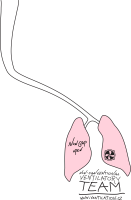 Následující odkazy na videa jsou určena pro posluchače debaty o lavinách a lavinovém výzkumu odvysílané na TV NOVA dne 21. 2. 2022 a jejich cílem je doplnit videozáznamy k informacím, které zazněly v uvedené diskusi:
Následující odkazy na videa jsou určena pro posluchače debaty o lavinách a lavinovém výzkumu odvysílané na TV NOVA dne 21. 2. 2022 a jejich cílem je doplnit videozáznamy k informacím, které zazněly v uvedené diskusi:
Simulace a vysvětlení spuštění sněhové laviny
Video ukazuje vznik tzv. deskové laviny. Člověk může kdekoliv, dokonce i pod kopcem porušit stabilitu sněhových vrstev. Poruchy se šíří po svahu a lavina na něho začne padat i z velmi vzdálených míst nad ním.
Simulace a vyzvětlení vzniku laviny
Záznamy reálných případů spuštění deskové laviny
Video ukazuje záznamy několika případů vzniku lavin. Zajímavé je si všimnout, že je jednom okamžiku se prakticky rozpadne a dá do pohybu obrovská masa ve všech směrech okolo lyžařů.
Záznamy reálných lavin
Když se člověk ocitne pod lavinou, nemůže nic dělat a dusí se
Ve videu je vidět v čase 1:16 “rozpad” sněhové vrstvy všude okolo lyžaře, pád lyžaře spolu s lavinou a dopadnutí laviny (1:45) a uvěznění lyžaře ve sněhu. Krátce poté (zhruba od 1:50) je slyšet nárůst dechového úsilí lyžaře, jeho zrychlení a výrazné prohloubení dechu. Lyžař se začíná dusit. Není schopen jakéhokoliv pohybu, nemůže udělat nic pro svoji záchranu. V závěru je vyhrabán a zachráněn kolegy.
pád do laviny (Pozor, chvíli trvá, než se video spustí.) Pozn.: Není nám znám autor videa; tento záznam koluje po celém světě mezi záchranáři, výzkumníky a lidmi pohybujícími se v lavinovém terénu již nejméně od roku 2009.









